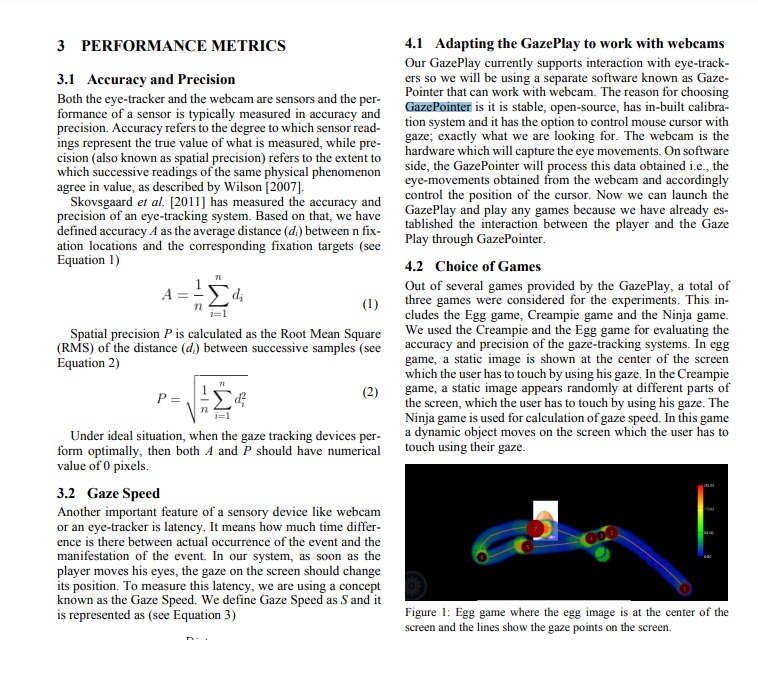
Gaze gaming software like GazePlay are often
used by people with multiple disabilities especially children as a tool for learning. Interaction
with this software can be done with a special type
of device known as eye-trackers. These eye-trackers capture the gaze of the player. The eye-trackers are often very expensive and it is not affordable for everyone. This report is aimed at evaluating whether webcams can be used instead of eyetrackers (like Tobii Eye-tacker 5) for gaze interaction. We have developed a methodology that can
be extended to test any gaze-tracking device and
their related software. We evaluated our methodology by performing remote experiments with ten
subjects. We conclude that webcam can be a viable option if the user is willing to accept some
trade-offs with respect to performance and also
depending on what kind of interaction he usually
performs